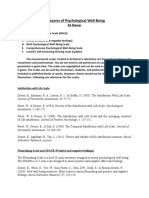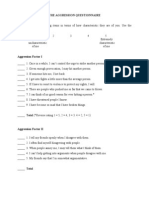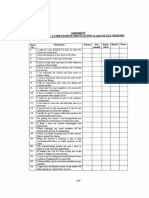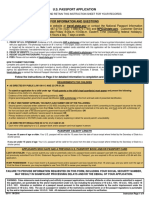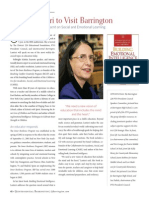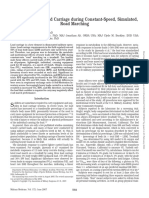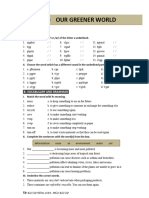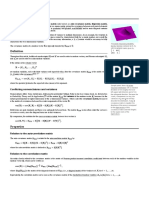Problem Solving Inventory
Heppner, P. P., & Petersen, C. H. (1982). The development and implications of a personal problem-
solving inventory. Journal of Counseling Psychology, 29, 66- 75
35 Items
3 Dimensions
1. When a solution to a problem has failed, I do not examine why it didn’t work.
2. When I am confronted with a complex problem, I don’t take the time to develop a strategy for
collecting information that will help define the nature of the problem.
3. When my first efforts to solve a problem fail, I become uneasy about my ability to handle the
situation.
4. After I solve a problem, I do not analyze what went right and what went wrong.
5. I am usually able to think of creative and effective alternatives to my problems.
6. After following a course of action to solve a problem, I compare the actual outcome with the one I
had anticipated.
7. When I have a problem, I think of as many possible ways to handle it as I can until I can’t come up
with any more ideas.
8. When confronted with a problem, I consistently examine my feelings to find out what is going on in
a problem situation.
9. When confused about a problem, I don’t clarify vague ideas or feelings by thinking of them in
concrete terms.
10. I have the ability to solve most problems even though initially no solution is immediately apparent.
11. Many of the problems I face are too complex for me to solve.
12. When solving a problem, I make decisions that I am happy with later.
13. When confronted with a problem, I tend to do the first thing that I can think of to solve it.
14. Sometimes I do not stop and take time to deal with my problems, but just kind of muddle ahead.
15. When considering solutions to a problem, I do not take the time to assess the potential success of
each alternative.
16. When confronted with a problem, I stop and think about it before deciding on a next step.
17. I generally act on the first idea that comes to mind in solving a problem.
18. When making a decision, I compare alternatives and weigh the consequences of one against the
other.
19. When I make plans to solve a problem, I am almost certain that I can make them work.
20. I try to predict the result of a particular course of action.
21. When I try to think of possible solutions to a problem, I do not come up with very many
alternatives.
22. When trying to solve a problem, one strategy I often use is to think of past problems that have been
similar.
23. Given enough time and effort, I believe I can solve most problems that confront me.
24. When faced with a novel situation, I have confidence that I can handle problems that may arise.
25. Even though I work on a problem, sometimes I feel like I’m groping or wandering and not getting
down to the real issue.
26. I make snap judgments and later regret them.
27. I trust my ability to solve new and difficult problems.
28. I use a systematic method to compare alternatives and make decisions.
29. When thinking of ways to handle a problem, I seldom combine ideas from various alternatives to
arrive at a workable solution.
30. When faced with a problem, I seldom assess the external forces that may be contributing to the
problem.
31. When confronted with a problem, I usually first survey the situation to determine the relevant
information.
�32. There are times when I become so emotionally charged that I can no longer see the alternatives for
solving a particular problem.
33. After making a decision, the actual outcome is usually similar to what I had anticipated.
34. When confronted with a problem, I am unsure of whether I can handle the situation.
35. When I become aware of a problem, one of the first things I do is try to find out exactly what the
problem is.
6-point Likert Scale (Strongly Agree; Moderately Agree; Slightly Agree; Slightly Disagree;
Moderately Disagree; Strongly Disagree)
Cronbachs α: all:.72 to .90 and
testretest correlations: all: .60 to .80
Cronbachs α PSC: .78 to .85
Cronbachs α:.84 to .90
Cronbachs α: PC. 72 to .74



























